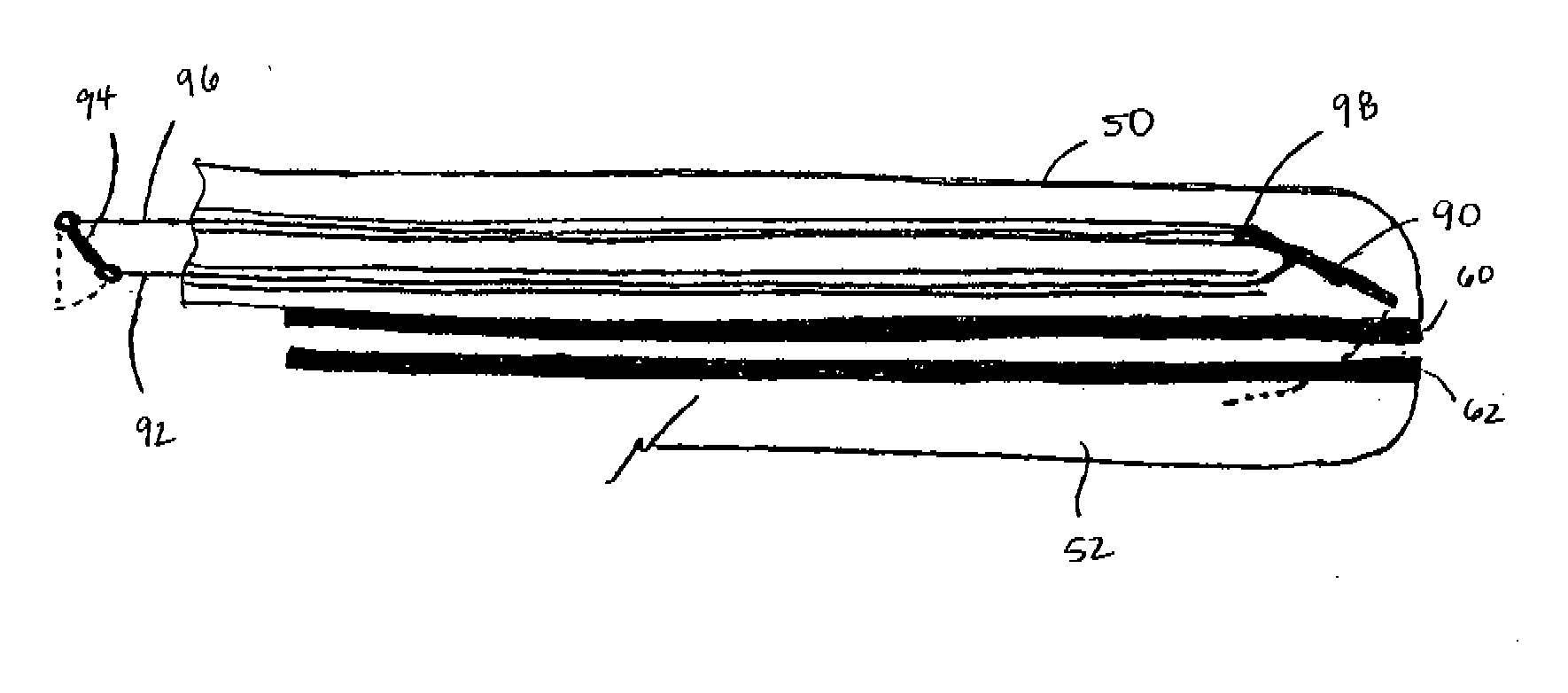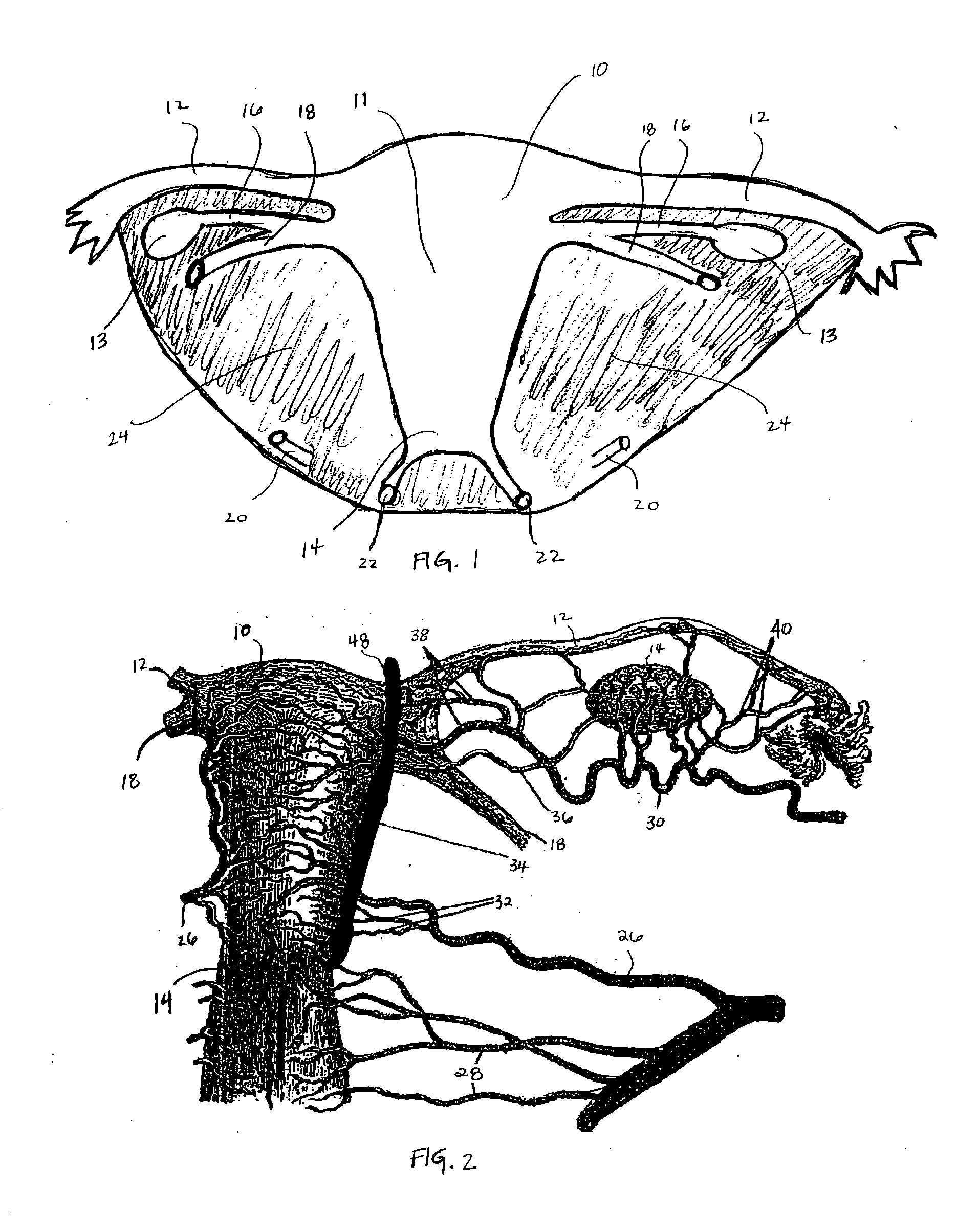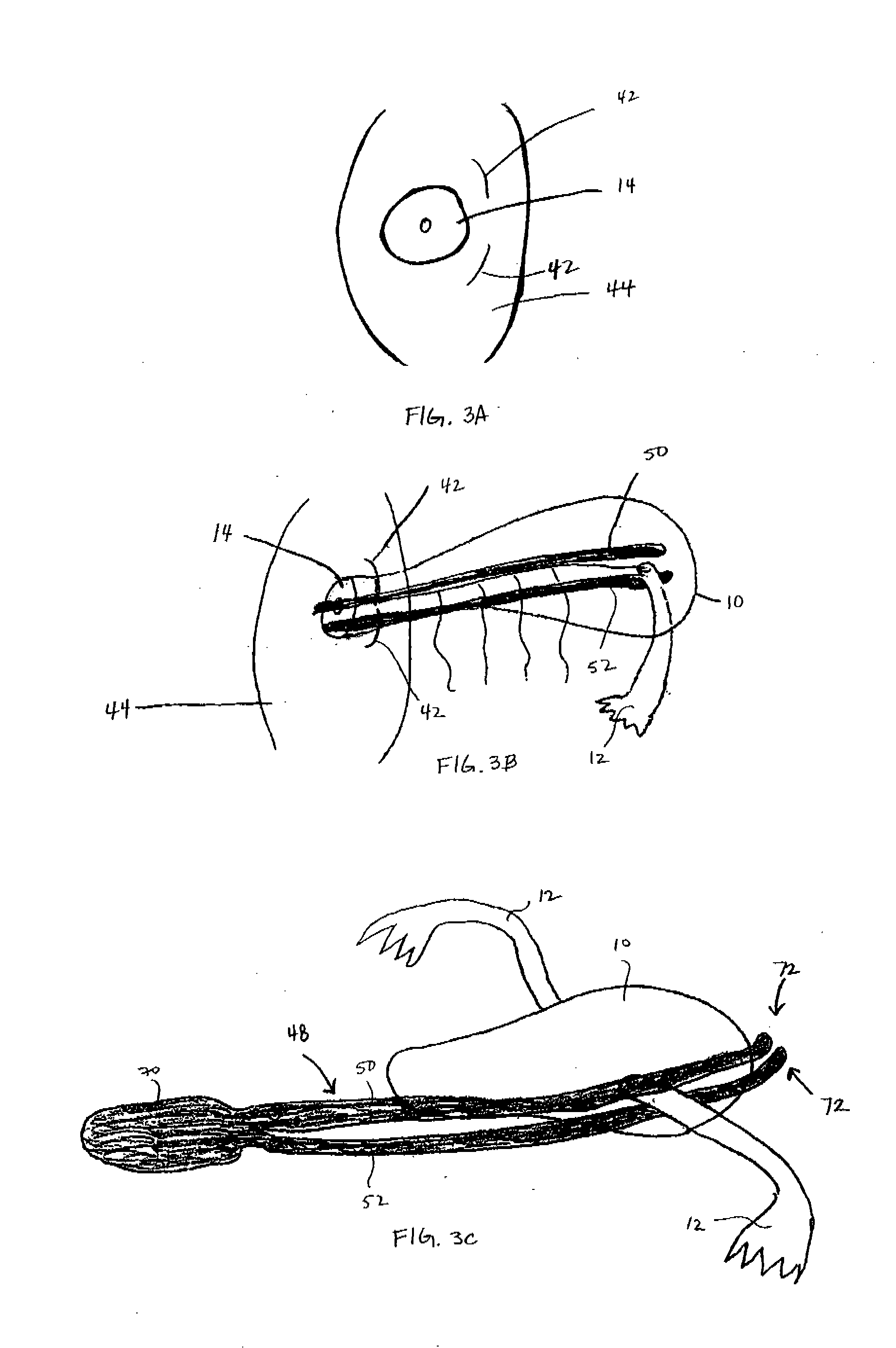Method and Apparatus for Performing a Surgical Procedure
a surgical procedure and surgical method technology, applied in the field of methods, can solve the problems of affecting the surgical procedure, and affecting the surgical effect, and achieve the effect of preventing premature tissue resection
- Summary
- Abstract
- Description
- Claims
- Application Information
AI Technical Summary
Benefits of technology
Problems solved by technology
Method used
Image
Examples
Embodiment Construction
[0033] The invention provides methods and devices for performing such procedures as vaginal hysterectomies. It will be appreciated however that application of the invention is not limited to removal of the uterus, but may also be applied for ligation of nearby structures such as the ovaries (oophorectomy), ovaries and fallopian tubes (salpingo-oophorectomy), fallopian tubes, uterine artery, and the like. It will further be appreciated that the invention is not limited to a vaginal approach, but may also allow for removal of the uterus via open abdominal hysterectomy, which is also within the scope of the invention. Additionally, laparoscopic visualization may be used to guide the procedures of the invention. Finally, the invention is likewise applied to other parts of the body in connection with other surgical procedures.
[0034]FIG. 1 illustrates a simplified frontal view of a uterus 10 comprising a body 11 and a cervix 14. Attaching structures of the uterus 10 include fallopian (ut...
PUM
 Login to View More
Login to View More Abstract
Description
Claims
Application Information
 Login to View More
Login to View More - R&D
- Intellectual Property
- Life Sciences
- Materials
- Tech Scout
- Unparalleled Data Quality
- Higher Quality Content
- 60% Fewer Hallucinations
Browse by: Latest US Patents, China's latest patents, Technical Efficacy Thesaurus, Application Domain, Technology Topic, Popular Technical Reports.
© 2025 PatSnap. All rights reserved.Legal|Privacy policy|Modern Slavery Act Transparency Statement|Sitemap|About US| Contact US: help@patsnap.com



